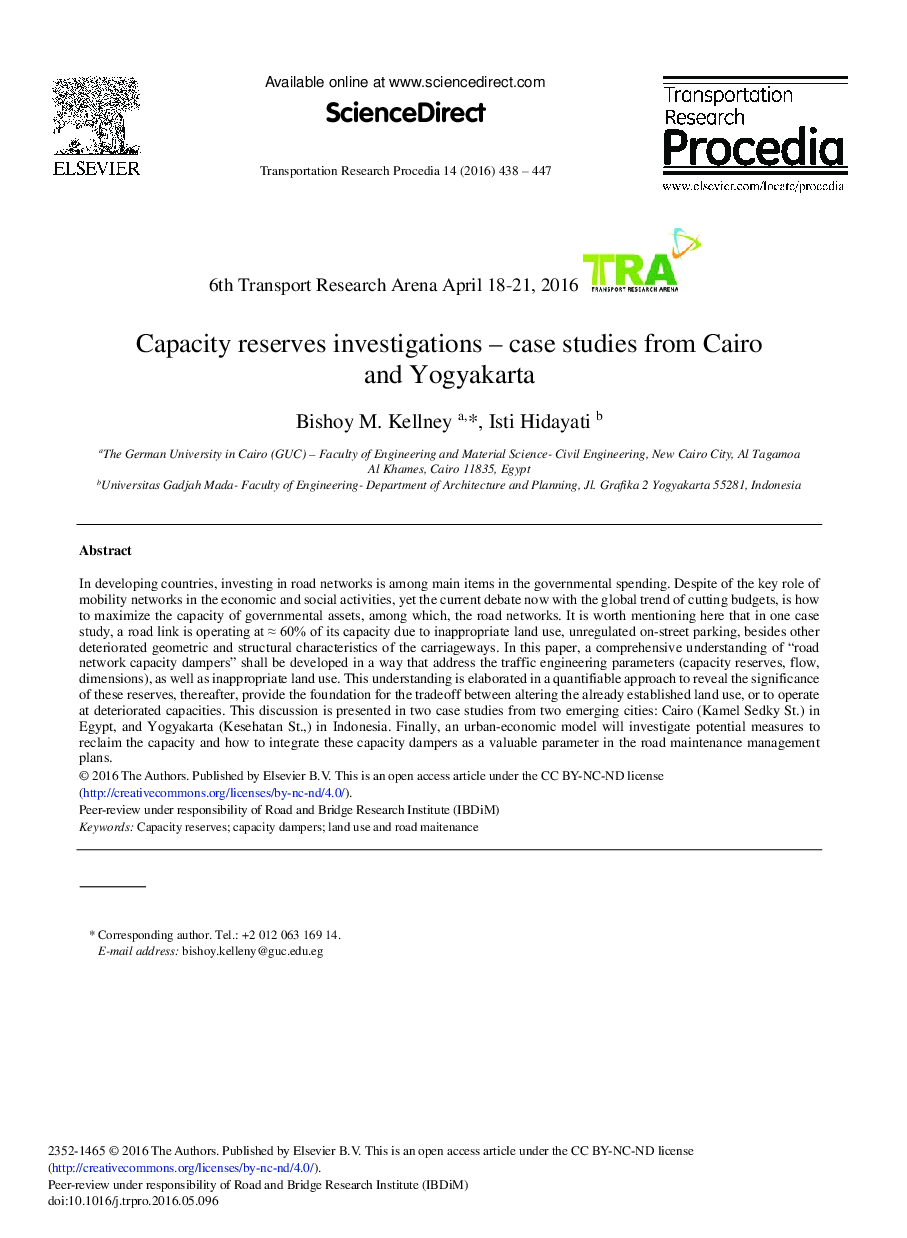| Article ID | Journal | Published Year | Pages | File Type |
|---|---|---|---|---|
| 1106229 | Transportation Research Procedia | 2016 | 10 Pages |
In developing countries, investing in road networks is among main items in the governmental spending. Despite of the key role of mobility networks in the economic and social activities, yet the current debate now with the global trend of cutting budgets, is how to maximize the capacity of governmental assets, among which, the road networks. It is worth mentioning here that in one case study, a road link is operating at ≈ 60% of its capacity due to inappropriate land use, unregulated on-street parking, besides other deteriorated geometric and structural characteristics of the carriageways. In this paper, a comprehensive understanding of “road network capacity dampers” shall be developed in a way that address the traffic engineering parameters (capacity reserves, flow, dimensions), as well as inappropriate land use. This understanding is elaborated in a quantifiable approach to reveal the significance of these reserves, thereafter, provide the foundation for the tradeoff between altering the already established land use, or to operate at deteriorated capacities. This discussion is presented in two case studies from two emerging cities: Cairo (Kamel Sedky St.) in Egypt, and Yogyakarta (Kesehatan St.,) in Indonesia. Finally, an urban-economic model will investigate potential measures to reclaim the capacity and how to integrate these capacity dampers as a valuable parameter in the road maintenance management plans.
